.
The timeline for all those that fell from the Launceston District during World War Two. This includes the Borough and the Parishes of Altarnun, Boyton, Broadwoodwidger, Egloskerry, Laneast, Lawhitton, Lewannick, Lezant, Lifton, North Hill, North Petherwin, South Petherwin, Stoke Climsland St. Stephens and Warbstow. These fifteen parishes all had someone that fell or died whilst in service of the country.
1940
Bernard Victor Hiram Bulmer
Bernard was born in 1920 at Totnes, Devon before the family moved to take over the Northgate Inn, Launceston, his Father was born in Liverpool and married Mabel. Bernard attended Launceston College. He joined the RAF straight from school serving a three year apprenticing as a wireless electrical mechanic. He was a keen sportsman winning the RAF heavy weight apprentices championship plus whilst in Launceston winning many swimming trophies. Air Craftman 1st class (Service No. RAF 569834): He was killed whilst flying in Sunderland I, L5799 KG-D of No 204 Sqn, which was shot down in combat with a He 111 on April 8th, 1940. The plane crashed into the sea west of Bergen, Norway, during a reconnaissance mission. His body was never recovered but he is commemorated on the Runnymede Memorial, Panel 24, and on the Launceston War Memorial.
Harry Wakem
Harry Buckingham Wakem was born in 1901 at Stonaford, Trebartha, North Hill to William and Jane (nee Buckingham) Wakem. His father was a labourer on the Trebartha Estate. As a teenager through the years of World War One Harry worked as a market gardener but on his 18th birthday, he enlisted into the Royal Navy at Devonport for a 12 year period of service, all of which was spent as a stoker. Harry’s first sea going posting was in May 1920 when he joined the C-Class light cruiser HMS Cambrian. After a short spell back on shore at HMS Vivid II, he was posted to the insect class gunboats HMS Cricket, Mantis and Bee from 1923 to 1926. In this period the gunboats were on the Royal Navy’s Yangtze River Patrol in China. Harry’s final posting was to on HMS Erebus, a gunner training vessel, before his ‘paper’ transfer to HMS Carysfort, which was the flagship of Devonport at the time and through which demobilization occurred. It is not known how his death occurred on April 13th, 1940, or why he is commemorated as one of the WW2 fallen on the North Hill War Memorial, but he is buried at North Hill Parish Church with a normal headstone.
Dunkirk
Cyril Roy Tickle
Cyril was born in September 1920 to Mr. and Mrs. William Tickle (Mother nee Lane) at Launceston. His Father worked as a Printer. Cyril attended Launceston College and on leaving went to work for a Bank in Exeter. He was a Gunner with the Royal Artillery (Regimental No. 1461340) serving with 151 Battalion, 51 (Devon) Light AA Regiment. He was reported as being taken prisoner at Dunkirk in October 1940. However, it was later confirmed that he had been killed in action on May 26th, 1940. His body was never recovered but his name is commemorated on the Dunkirk Memorial, panel 15. He left the sum of £833 6s. 7d to his Father William of 5 Shilson Terrace, Launceston. He is commemorated on the Launceston War Memorial.
The Territorial Army mobilised on the outbreak of war and the 51st (Devon) LAA Regiment crossed to France as part of 2nd Anti-Aircraft Brigade (2nd AA Bde). When the German offensive began on 10 May 1940, 2nd AA Bde’s task was to defend the airfields of the BEF’s Air Component. As the Luftwaffe began the air raids that heralded the German offensive, 151st LAA Bty was in action at Abbeville airfield with A and C Troops. C Troop soon registered a hit, and A Troop claimed 11 hits during the day, but a Battery Quartermaster Sergeant (BQMS) and three gunners were killed. By May 24th, the BEF was withdrawing towards the coast and beginning its evacuation from Dunkirk. 2nd AA Brigade took over control of all AA defences in Dunkirk, with 51st LAA Rgt providing air defence in the northern sector of the pocket. At Dunkirk the last three guns of B Trp were constantly in action on Bray-Dunes, one gun being destroyed by a direct hit. Here they were joined by 152nd LAA Bty, with D, E and F Trps, which took up positions on the Dunkirk beaches and went into action at once. They were in continuous action from 21 to 25 May and many aircraft were brought down. By May 27th, all ammunition was expended and the guns were destroyed before the crews were evacuated. The RA history comments: ‘This gallant battery had done much to save the BEF from the incessant air attacks n the beaches’. Source https://www.wikizero.com/en/1st_Devonshire_Artillery_Volunteers
Leslie J. M. Sleep
Leslie was born on October 5th, 1914 at Mid Inny, Laneast, to John and Rosina Jane (nee Morris). His father worked as a farm labourer and on leaving school, Leslie went to work for Cornwall County Council as a labourer. His military record is sketchy, but he could have served with the 7th Battalion of the Royal Warwickshire Regiment as a private (Regimental No. 5109635) and was listed as wounded or missing on May 28th, 1940, which was then confirmed a year later that he had died of his wounds. His name is also commemorated on the Laneast War Memorial and Memorial Seat.
The 1/7th and 8th Battalions were in Belgium as part of the BEF. On May 16th with the Allied front crumbling rapidly they were ordered back. With the Germans advancing in a pincer movement there was a danger that the BEF would be cut off. 143 Brigade (including Royal Warwickshire 1/7th and 8th Battalion) was sent to defend the Ypres-Comines canal zone. The lives of many thousands rested on the depleted force. The troops withstood the assault of three German Divisions on May 27th and 28th. This saved 2nd Corps and did much to aid the successful withdrawal of the BEF. Just one night made a big difference to the number of men that reached England safely (midnight May 28th, 25,000 and May 29th a further 47,300). However, the loss of life amongst the three Battalions was great, on their return to England their combined strength was less than 700 men (about one Battalion).
Lionel Decieco
Lionel was born in 1915 to Lionel and Cicily (nee Jones) Decieco at Launceston. (His Father was born in Sant’Elia, Caserta, Italy in 1892 and moved to Penzance before 1914, serving during WW1 in the Reserve Heavy Battery (Regimental No 1905), Territorial Force Rank Gunner. He Got 14 Days Restricted Privileges on 9/7/1918 For Stealing Potatoes. He Was Discharged On 13/3/1919. His Number Was Changed When He Moved Over To Royal Garrison Artillery.) Lionel senior worked as a carpenter and the family lived at 32 Northgate Street. Lionel junior was a gunner with the Royal Artillery (Regimental no 826423) serving with the 12 Battery, 6 A.A. Regiment. He was killed on June 1st, 1940 at Dunkirk and is buried at Marquise Communal Cemetery, Marquise, Departement du Pas-de-Calais, Nord-Pas-de-Calais, France, Plot: Plot 1. Row A. Grave 13. He is commemorated on the Launceston War Memorial.
Lionel had married and his widow was Phyllis Mary Decieco, of Crowborough, Sussex and they had one son.
Kenneth William Cock
Kenneth was born in 1919 to Frederick William and Annie Cock at Launceston. He enlisted with the Royal Navy (Service No. D/KX 91135) as a Stoker First Class. He was serving aboard ‘HMS Ardent’ when it was sunk on June 9th, 1940. His body was never recovered but his name is commemorated on the Plymouth Naval Memorial Panel 41 column 1. He is also commemorated on the Launceston War Memorial and St Stephens Roll of Honour.
HMS Ardent was detached from Ark Royal on June 8th and joined Acasta in escorting Glorious back to Scapa Flow. En route, the three ships were discovered by the German warships Scharnhorst and Gneisenau. Ardent and Acasta laid a protective smokescreen to hide the British ships, and engaged the German ships with her 4.7 in (120 mm) the main armament, which proved to be ineffective at the range of the targets. Despite coming under heavy fire from the much larger guns of the Germans, Ardent carried out a torpedo attack. She managed to score a single hit with her 4.7 in (120 mm) gun, but was struck repeatedly by enemy shells. Ardent eventually capsized with the loss of 10 officers and 142 ratings. Acasta and Glorious were also sunk in the engagement.
Arthur William Thomas
Arthur was born in 1921 to William and Mabel Thomas at 16 Dutson Terrace, Launceston. Arthur joined the Royal Navy as an Able Seaman
(Service No. D/JX 152278) He was serving aboard ‘HMS Furious’ when he died on November 10th, 1940. He is buried at Bootle Cemetery. He is commemorated on the Launceston War Memorial.
Thomas Alfred Waye
Thomas was born in 1890 at Sydenham Damerell, Devon to Thomas and Emma (nee Cox, formerly Friend) Waye. His father was an agricultural labourer. On leaving school, Thomas went to work for the railways eventually becoming a signalman. He enlisted with the Royal Navy eventually rising in the ranks to Chief Yeoman of Signals (service no. D/ 238626). He married Emily Doidge at St. Germans in 1922. He was serving aboard S.S. Juma when it was attacked and sunk by a raider west of Cape Finisterre, Spain on December 25th, 1940. Thomas’s name is commemorated on the Plymouth Naval Memoriam. He is commemorated on the Stoke Climsland War Memorial.
1941
Ronald Davey

Ron was born in 1917 to Charles and Ethel Davey of Fore street, Lifton. His father was a Labourer. He joined the Royal Navy as a Shipwright 4th Class (Service No. D/MX 59472) and was serving aboard ‘HMS Hermes’ on April 8th, 1941, when warning of an approaching Japanese fleet was received and ‘Hermes’ sailed that day for the Maldives with no aircraft onboard. She was spotted on April 9th, near Batticaloa by a Japanese scout plane and attacked by several dozen dive bombers shortly afterwards. With no aircraft cover, the carrier and her escorting destroyer were quickly sunk by the Japanese aircraft. Most of the survivors were rescued by a nearby hospital ship although 307 men from Hermes were lost in the sinking including Ron. His body was never recovered but his name is commemorated on the Plymouth Naval Memorial and on the Lifton War Memorial.
William Henry Cobbledick
William was born in 1896 at Okehampton. He enlisted with the Royal Navy Stoker 1st Class (Service No. D/K 29420) serving throughout the First World War. He was killed whilst serving aboard ‘HMS Wryneck’ when she was sunk by German aircraft, whilst helping to evacuate Allied troops after the fall of Greece on April 27th, 1941. His body was never recovered but his name is commemorated on the Plymouth Naval Memorial, Panel 52, Column 3 . He is also commemorated on the North Petherwin War Memorial.
HMS Wryneck was British Navy Destroyer Type Class W and was one of two British destroyers (D21) attacked by German Stuka aircraft and sunk off Nauplia, Greece. She was helping in the evacuation of troops from Greece, and in the process had picked up, with the help of another destroyer HMS Diamond, around 700 troops and crew from the 11,600 ton Dutch liner Slamat, now converted as a troopship and under British control, which had been attacked and damaged earlier. Of approximately 950 troops and crews of both ships only one officer, fourteen naval ratings and eight soldiers were rescued. Source www.wrecksite
Roger Walter Hayman
Roger or Walter as he was known, was born in 1883 to John and Jane Hayman at Bradworthy, Devon. His father was a farm labourer. On leaving school, Walter went to also work as a Farm Labourer for Joseph Cater at Marcott Farm, Sutcombe. He then enlisted with the Devonshire Regiment (Regimental No. 7495) in March 1903. He saw service in India (1903-1907) and South Africa (1907-1910) before being placed on the reserved list. Being on the reserved list, he was immediately called up on August 15th, 1914, at the outset of the First World War, but was discharged under Paragraph 392 of King’s Regulations 1912, just 7 days later as being ‘no longer physically fit for war service.’ With his wife Lilian Marian (nee Hocking) he settled to live at 5 Tower Street, Launceston where he was working a Bar/Cellarman in 1939. He was killed by enemy bombing of the Royal Naval Armament Depot at Bull Point, Plymouth on the 29th of April 1941 aged 58. It could be assumed that at the time he was serving as an auxiliary fireman with the Launceston division of the National Fire Service, who were sent to help aid Plymouth during the blitz, although given his physical fitness in 1914, it is more likely that he could have just been an innocent passenger on a train, as the track near to Bull Point was heavily bombed.
On the 29th/30th April Plymouth and Devonport were again attacked, and, although the raid was on a larger scale than any of its predecessors, it began with inaccurate, bombing in open country North of the city, where wood-fires at Mount Edgcumbe were heavily bombed. It was comparatively late in the raid before the enemy found his targets, and the attack did not therefore seem so heavy as some of its predecessors.
The raid lasted nearly four hours, and, though its effects cannot yet be fully assessed, it is clear that, after all that the city and its environs have lately been through, this raid struck a heavy blow. The main weight of attack was felt at Keyham and Milehouse, between Plymouth and Devonport.
From the Home Security Report for the week.
Richard Thomas Sandercock
Richard was born on August 20th, 1908 to Charles and Elsie Sandercock at Launceston. His Father served with the Royal Engineers (Regimental No. 176725) in Salonika during world war one. Richard married Winifred Kate Duance at Launceston in 1933 and they had one son Tony and one daughter Jennifer and lived at 5, St. Thomas Road, Launceston.
He enlisted with his Fathers Regiment the Royal Engineers (Regimental No. 5433982) serving as a Lance Sergeant with 7th Bomb Disposal Company. He died on April 30th, 1941. He is buried at Launceston Cemetery ,Plot B. B. Grave 153. He is also commemorated on the Launceston War Memorial.
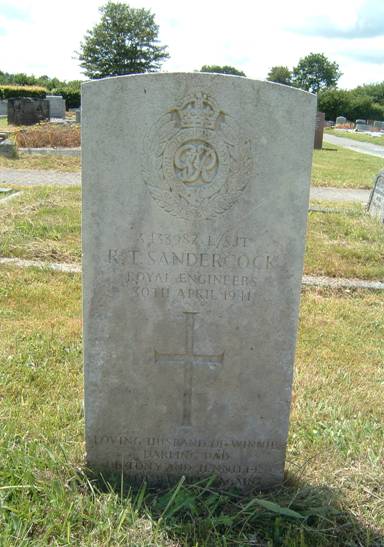
Leslie Daniel
Leslie was born on December 2nd, 1918, and attended North Hill Village School (now the Racehorse Inn). At the age of 15 he left Cornwall to work for Sainsbury’s in London, where he remained until he was called up at the beginning of WW2 in 1939. He enlisted with the Royal Navy, joining ‘HMS Gloucester’ which was on duty continuously from mid-1940 until her sinking by German Stuka dive bombers during the Battle of Crete on May 22nd, 1941. By this time she was known as the Fighting G, having won five battle honours in under twelve months. Leslie was officially posted as lost at sea. His name is commemorated on the North Hill War Memorial and the Plymouth Naval War Memorial on the Hoe. Seven hundred and twenty two of the 807 crew members were lost, representing over 30% of total naval personnel killed in the Battle for Crete.
Richard Haig
Richard was born in 1902 to Robert Haig and his wife. In 1938 He married Amy Roberts at Launceston. Richard joined the Royal Navy as a stoker (Service No D/K 65336). He eventually made Leading Stoker. It was whilst serving at ‘HMS Cochrane II’ (HMS Cochrane II was the Rosyth supply and accounting base for tenders between 1940 and 1945) that he died on June 4th, 1941. He is commemorated on the Plymouth Naval Memorial, Panel 52, Column 2. and Lezant War Memorial. At the time of his death, his wife, Amy Haigh, was living at Bodmin.
Selwyn Fernley Parsons
Selwyn was born in 1914 to John and Beatrice (nee Butler) Parsons at Launceston. His Father was a Farm Labourer living at Hurdongate, Launceston. He enlisted as a Private with the Royal Army Ordnance Corps (Regimental No. 13063156). He died at sea on July 5th, 1941 when the SS Anselm was torpedoed by German U-Boat U96 near the Canary Islands. Selwyn was one of 254 lost, but over 1200 were save by escorting Royal Navy ships. He is commemorated on the Brookwood (1939-1945) Memorial, Brookwood, Woking Borough, Surrey, Plot: Panel 19, Column 2 and also on the Launceston War Memorial.
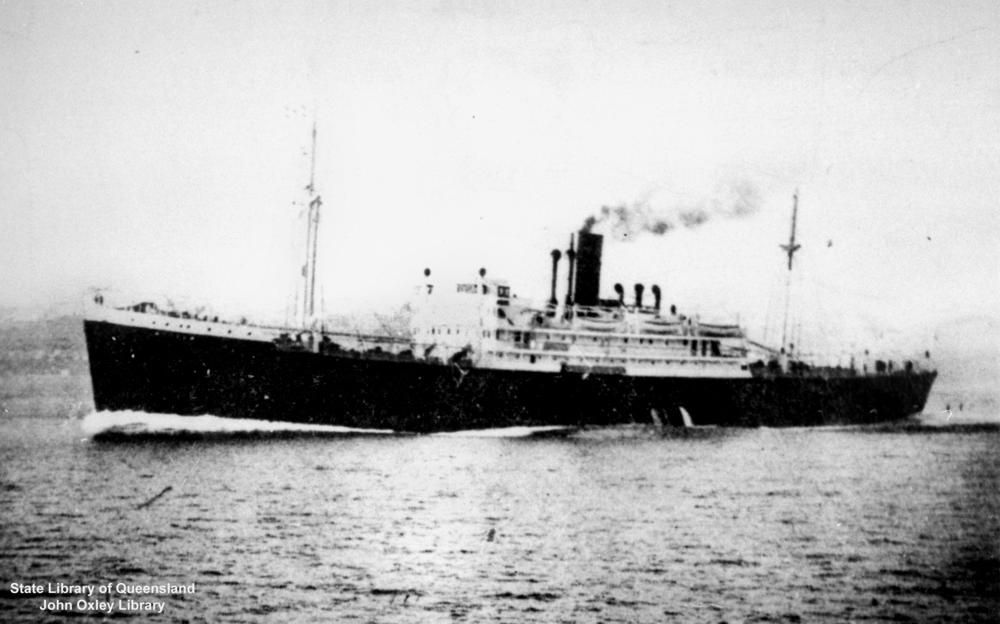
In the morning of July 5th, 1941, U-96 was pursuing a convoy contact report from a Condor aircraft through fog about 300 miles north of the Azores when the she came upon a curious formation of six vessels: the British survey vessel HMS Challenger (J 98), leading the troopship Anselm, the armed merchant cruiser HMS Cathay (F 05) and three corvettes, HMS Petunia (K 79), HMS Lavender (K 60) and HMS Starwort (K 20) which were deployed to port, starboard and astern of the troopship. At 08.29 hours, U-96 fired a salvo of four torpedoes and thought that she had scored hits on the AMC and a yacht (the survey ship). However, two torpedoes hit the Anselm, sinking her within 22 minutes, but that was time enough for the crew to launch all but one of the lifeboats. Nonetheless, four crew members and 250 of the service personnel on board were lost. Source https://en.wikipedia.org/wiki/SS_Anselm_(1935)
Philip Witheridge Manning
Philip was born in 1914 to Philip John and Anne Ethel (nee Witheridge) Manning at Penzance. Philip married Freda May Abbott in 1940 at Launceston. He enlisted with the Royal Armoured Corps (Regimental No. 7912029) 11th, Hussars (Prince Albert’s Own) as a trooper.
He was killed in action at Sollum,12 kilometres from the Libyan border on August 7th, 1941 and is buried at the Halfaya Sollum War Cemetery, Egypt, Plot: 15. C. 4.
At the time of his death he was listed as residing at No.16 Riversdale Road, West Cross, Mumbles, Swansea. He left a total of £124 3s. 10d. to his wife. His name is also commemorated on the Mumbles war memorial. He is commemorated on the Launceston War Memorial.
Reginald Hocken Lashbrook
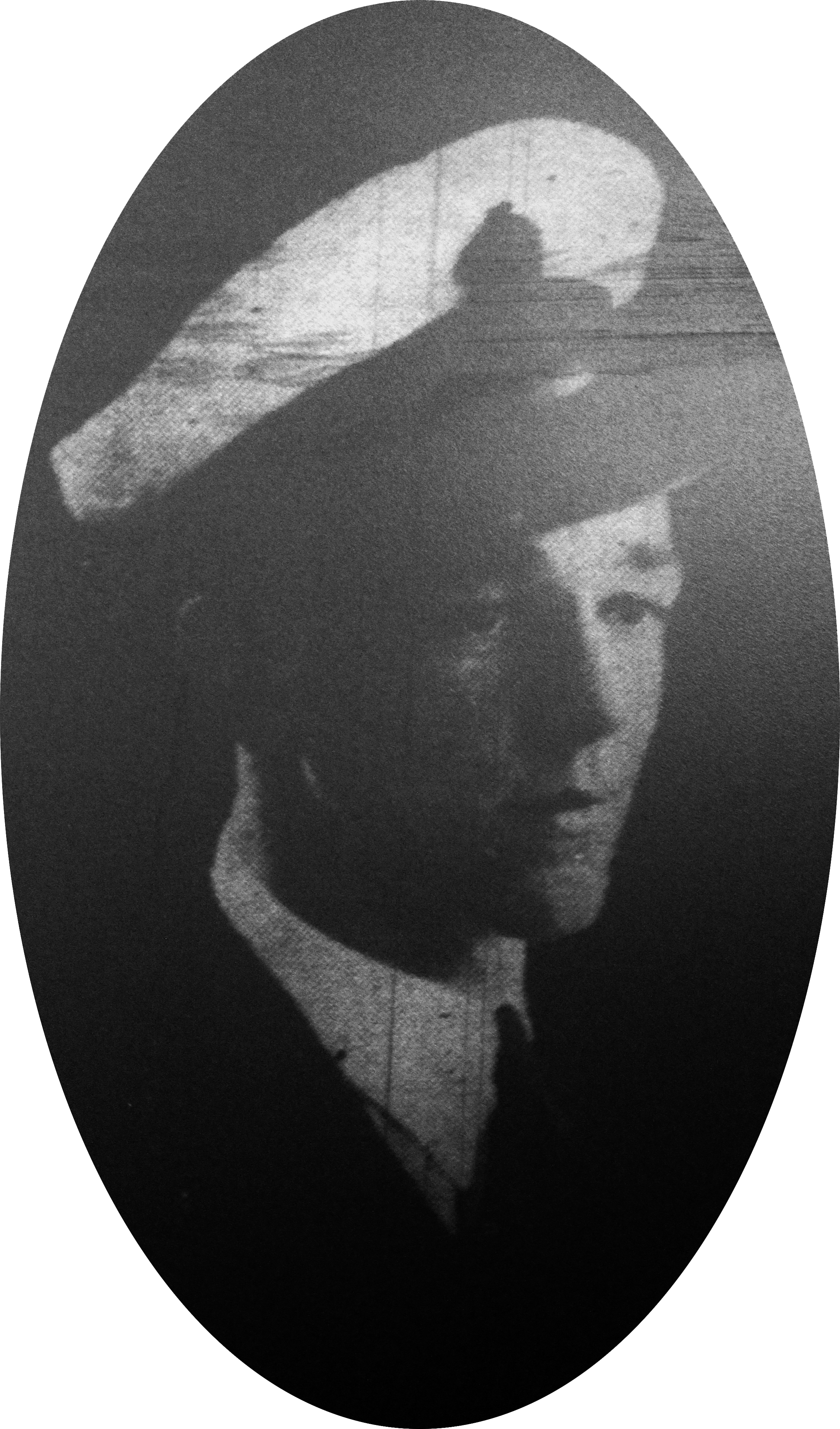
Reginald was born in 1921 to John Henry and Lilly (nee Moon) Lashbrook at 7, Tavistock Road, Launceston. His father worked for the Railways and had been the Station Master at Ashwater Station in 1911.
He enlisted with the Royal Navy as a Sick Berth Attendant (Service No. D/MX 69442) at ‘HMS Drake’ Devonport. He died on March 15th, 1941 after falling 120 feet at a quarry near Lifton Park. He is buried at Launceston Cemetery, Plot D. D. Grave 153.
Raymond Ancil Rotherham (although his only connection to the town was through him being at Launceston Hospital where he died)
Raymond was born in 1913 to Albert Arthur and Sarah Jane (nee Ancil) Rotherham at Evesham, Worcestershire. His father was listed in the 1911 census as a cowman on a farm. Albert himself was called up to the 5th Battalion of the Worcester Regiment in December 1914 although he was discharged on July 20th, 1915 having been gassed, and being no longer physically fit for service. Albert health was deemed to be so poor that it was unlikely that he would ever work again although he would live on until 1953.
Raymond married Iris Elizabeth Lycett in 1938 at Stratford upon Avon. He had initially enlisted with the Devonshire Regiment but was subsequently transferred to the Royal Fusiliers (City of London Regiment) (Service No. 5616705) serving with the 15th Battalion as a Corporal. He died on August 8th, 1941 at Launceston Hospital after what is believed to have been an army lorry accident while on convoy in the district and is interred in Launceston Cemetery, Plot H. H. Grave 158.
Gavin David Colville
Gavin was born in 1922 at Chertsey, Surrey to Norman and Marjorie Colville. His father had served in the first World War and owned Penheale Manor and Estate. Educated at Eton, he enlisted with the RAF as a Sergeant (Service No. 929677) serving as a pilot with 40 Squadron flying a Vickers Wellington IC. He was initially reported as missing but was killed in action on November 2nd, 1941 whilst fighting at Tripoli, Libya. He was interred in the Municipal Cemetery at Tripoli, Grave11. G. 18. He is commemorated on the Egloskerry War Memorial.
40 Squadron operated Bristol Blenheim Mk IV light bombers from RAF Wyton from December 1939 until November 1940, when it converted to Vickers Wellingtons in the night bombing role. On the 14 April 1940 one of the Squadrons Blenheims (L9207) was taken on an unauthorized flight by AC2 JFB Lewis and crashed in the Thames Estuary. His body was not found and he is remembered on the Runnymede Memorial. After operating a detachment in Malta from October 1941, the squadron moved there in February 1942, the remaining UK-based element being renumbered No. 156 Squadron RAF. It later moved to Egypt, Libya, Tunisia and then, in December 1943, to Italy. During the night November 2nd and 3rd, 1941, Wellingtons from both 40 and 104 Squadrons took off from Luqa and raided Castel Benito airfield, Tripoli. They reported dropping nearly 28 tons of H.E. and incendiaries. Workshops and ammunition dumps were hit, and petrol tanks were destroyed and fires were started in hangars and buildings. Aircraft dispersed on the ground were bombed and machine-gunned, and at least 12 were seen to be on fire. One CR.42 was shot down and one Wellington and crew was missing.
The majority of the pilots reported sighting night-fighters over the target. They made four separate attacks without effect. Fire was returned in all cases and the rear gunner of X claimed one CR.42 shot down, which was seen to crash on the ground. R received a hit in the port tyre and one in the fuselage. Heavy and light AA was inaccurate and moderate.
A New Zealand pilot with 40 Squadron, Sergeant C. A. Armstrong, pressed home his attack in such a determined manner that he gained the award of a D.F.M., his citation stating: ”…he bombed the aerodrome at Castel Benito, setting aircraft on the ground on fire. He then descended to 200 feet and machine-gunned the airfield.”
X9763/U of the same squadron, piloted by Sergeant G. D. Colville, failed to return. Sergeants Gavin David Colville (RAF no. 929677), 20-year-old Ian Russell McCalman (RAAF no. 400418), 23-year-old Harold Michael Forth (RAF no. 748116), Ernest Donald Spry (RAF no. 957039), 20-year-old Thomas Wilson Robson (RAF no. 1100625) and 20-year-old John Thomas Ackroyd (RAF no. 1379183) were all KIA. Source http://surfcity.kund.dalnet.se/italy_andalo.htm
Basil Frederick Percy Bamsey Wingfield
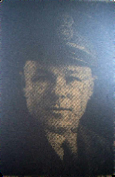
Basil was born in 1905 at Launceston to Frederick Percy and Lily Ivy (nee Sandercock) Wingfield. He was married to Gwendoline Francis Wingfield and had one Daughter Marlene. He was a Chief Electrical Artificer with the Royal Navy (Service No. D/MX 47709).
Basil died on December 10th, 1941 whilst serving aboard ‘HMS Prince of Wales’ which was sunk by Japanese bombers. His body was never recovered but his name is commemorated on the Plymouth Naval Memorial. He is also commemorated on the Launceston War Memorial.
On October 25th, 1941, Prince of Wales departed for Singapore to join Force Z, a British naval detachment. She docked there on December 2nd, with the rest of the force, and at 2:11 on the10th of December Force Z was dispatched to investigate reports of Japanese landing forces at Kuantan. On arriving there they found the reports to be false. At 11:00 that morning Japanese bombers and torpedo aircraft began their assault on Force Z.
In a second attack at 11:30 one torpedo struck Prince of Wales on the port side, wrecking the outer propeller shaft and causing the ship to take on a heavy list. A third torpedo attack developed against HMS Repulse, a Renown-class battlecruiser in Force Z, but she managed to avoid all torpedoes aimed at her.
A fourth attack by torpedo-carrying Type 1 “Bettys” sank Repulse at 12:33. Six aircraft from this wave attacked Prince of Wales, with three of their torpedoes hitting the ship on the starboard side, causing flooding. Finally a 500 kg bomb hit the catapult deck, penetrated through to the main deck and exploded, tearing a gash in the port side of the hull. At 13:15 the order was given to abandon ship and at 13:20 Prince of Wales sank; Vice-Admiral Tom Phillips and Captain John Leach were among the 327 fatalities as was Basil.
Prince of Wales and Repulse were the first capital ships to be sunk solely by air power on the open sea (albeit by land-based rather than carrier-based aircraft), a harbinger of the diminishing role this class of ships was subsequently to play in naval warfare. The wreck lies upside down in 223 feet (68 m) of water, near Kuantan, in the South China Sea.
Percy John Rowe
Percy was born in 1910 to Edward and Edith Rowe at Lezant. His father was a General Carpenter and the family lived at Tredown Cotages, Lezant. Percy joined the Royal Navy as an Able Seaman (Service No. D/JX 128324). He was another ‘Lanson’ lad serving aboard ‘HMS Prince of Wales’ when it was sunk on December 10th, 1941. His body was never recovered but his name is commemorated on the Plymouth Naval Memorial,Panel 48, Column 2. He is also commemorated on the Lezant War Memorial. He left a widow, Joan (nee Munt) Rowe, of Chard, Somerset.
Thomas Charles Hawkins
Thomas was born in 1913 at East Stonehouse, Plymouth. (His Mothers maiden name was Huggins). He was a talented musician being able to play both the Violin and piano proficiently and was always in demand for concerts. He was also a member of the Brotherhood.
He enlisted with the Royal Marines in 1933 (Service No. PLY/X 1028). He was a gunlayer (the person who controls the angle of elevation of a gun), serving aboard ‘HMS Neptune’.
On the night of December 19th, 1941 the Cruiser ‘HMS Neptune’ ran into an uncharted minefield in the Mediterranean off Tripoli, and sank with the loss of 764 officers and men. Just one man was rescued by an Italian torpedo boat, after 5 days in the water.
Thomas was reported as missing in January 1942 presumed dead. His body was never recovered but his name is commemorated on the Plymouth Naval memorial, Panel 59 Column 3, and also on the Launceston War Memorial. At the time of his death his mother was living at Hendra, Dunheved Road, Launceston. In his will he left £150 12s. 3d. to Ellen Bray (Wife of Stanley Bray).
Allin Roseveare Rowe
Allin was born in 1915 at Devonport, Plymouth, to Bertram and Ethel (nee Allin) Rowe. His father was a shipwright. Allin joined the Royal Navy as a stoker (service no. D/KX 82710) although he rose to the rank of Petty Officer Stoker. He was serving aboard ‘HMS Stanley’ when at Gibraltar in mid-December she joined Convoy HG-76, departing December 14th, for Britain. On December 17th, one of the escort carrier Audacity’s aircraft sighted a submarine 22 miles on the port beam of the convoy. Stanley and four other escorts quickly established contact, sank U-131, and picked up 55 survivors. The next day, Stanley, with Blankney, scored another success, sinking U-434 and picking up 42 of her crew. On December 19th, 1941, success ran out. Stanley, on station astern of the convoy, reported the presence of another U-boat. Half an hour later U-574 scored a direct hit; Stanley exploded and sank with the loss of all but 25 of her crew. Allin was one of those that perished. His body was never recovered but his name is commemorated on the Plymouth Naval Memorial, Panel 52, Column 1.. He is also commemorated on the Stoke Climsland War Memorial.
1942
William Henry Baker
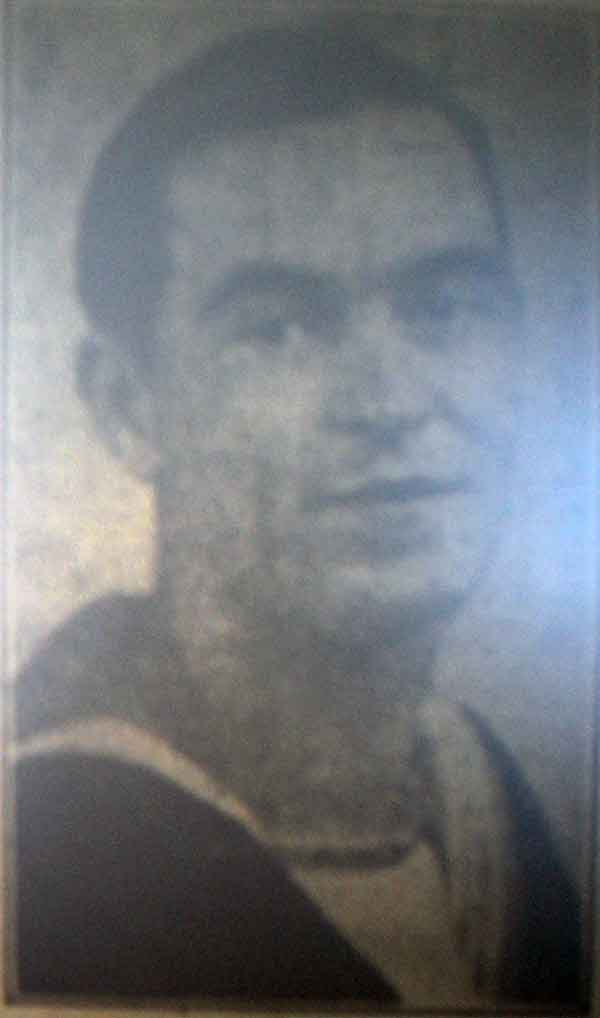
William was the son of Henry James and Agnes Elfrida Baker of No. 15, The Crescent, Lifton. His father was a builders labourer. He joined the Royal Navy as an Able Seaman (Service No. D/SSX 28383). He was aboard ‘HMS Repulse’ when she was sunk by Japanese aircraft on December 10th, 1941 when they attempted to intercept landings in British Malaya. William survived this and was landed at Singapore.
He was then put aboard ‘HMS Li Wo’ which was an auxiliary patrol vessel of the British Royal Navy, which was sunk on February 14th, 1942 by Japanese warships as she single-handedly attacked an enemy convoy during the Malayan Campaign, becoming the most decorated small ship in the Royal Navy. His body was never recovered but his name is commemorated on the Plymouth Naval Memorial and on the Lifton War Memorial.
Archie Edward Jury
Archie was born in 1911 to Edward and Louisa Jury at Windmill Cottage, Launceston. His Father worked as a Mason. In 1934 he married Elsie May Browning in Launceston. He joined the Royal Navy (Service No. D/KX 79574) as a Leading Stoker serving aboard HM Submarine Tempest. He was killed on February 23rd, 1942. He was mentioned in dispatches and although his body was never recovered his name is commemorated on the Plymouth Naval Memorial. He is also commemorated on the Launceston War Memorial and St Stephens Roll of Honour.
HMS Tempest sailed from Malta on the night of 10 February 1942 to patrol the Gulf of Taranto. On the evening of the 11th Tempest was signalled that the Italians were aware of a submarine in her vicinity and that it should be assumed that her patrol had been compromised. On the 13th, Tempest was sighted on the surface by the Italian destroyer Circe. Tempest crash dived and Circe began depth charging the area, eventually resulting in oil being seen on the surface. Tempest’s battery tanks had burst filling the boat with chlorine gas and the vessel was forced to surface, whereupon she was hit by gunfire from the Circe. The crew abandoned the submarine, and 23 of the crew of 62 were picked up some 3 hours later by the destroyer. The Italians attempted to board the abandoned vessel but were unable to, due to rough seas. Instead, the Italian destroyer opened fire, scoring more than a dozen direct hits, but failing to sink the Tempest. Finally the Italians attempted to take the submarine in tow. Two members of the destroyer’s crew boarded the submarine and prepared the tow. As Circe manoeuvred to take up the tow, Tempest suddenly started to sink, forcing those on board to jump into the sea. The submarine slipped beneath the waves stern-first, with the bows disappearing vertical.
Geoffrey William Geake
Geoffrey was born in 1913 to Mr and Mrs Lawrence Geake (His Mothers maiden name was Lintern) at Tavistock. By 1942 the family had moved to Duke Street, St. Stephens, Launceston. He enlisted with the Royal Navy serving as an Able Seaman (Service No. D/JX185481). He was serving aboard ‘HMS Jupiter’ when she was sunk off the north Java coast in the Java Sea on February 27th, 1942, at 2116 hours, by a mine laid earlier in the day by the Dutch minelayer Gouden Leeuw. Initially, the explosion was thought to be caused by a Japanese torpedo. Geoffrey was killed in the explosion. His body was never recovered but his name is commemorated on the Plymouth Naval Memorial Panel 65 column 1. He is also commemorated on the Launceston War Memorial and St Stephens Roll of Honour.
Gerald Hillman
Gerald was born in 1920 to Ernest and Mabel Hillman at 22 Westgate Street, Launceston. His Father worked as a Civil Servant. Gerald enlisted with the Royal Navy and served aboard ‘HMS Anking’ as a Leading Supply Assistant (Service No. D/MX 63628). HMS Anking, was sunk by Japanese gunfire at 06:30 on March 4th, 1942, A squadron of Japanese heavy cruisers, led by Admiral Kondo, engaged the convoy containing HMS Anking. The squadron consisted of Atago, Takao and Maya, each armed with ten 8-inch guns, and two destroyers, Arashi and Nowaki. The cruisers opened fire while remaining outside the range of the escorts guns. ‘HMS Anking’ sank in less than 10 minutes with the loss of one officer and 25 ratings Gerald was one of those that died. His body was never recovered but his name is commemorated on the Plymouth Naval Memorial, panel 71 column 3. He is also commemorated on the Launceston War Memorial.
He left a sum of £211 18s 9d to his Father Ernest.
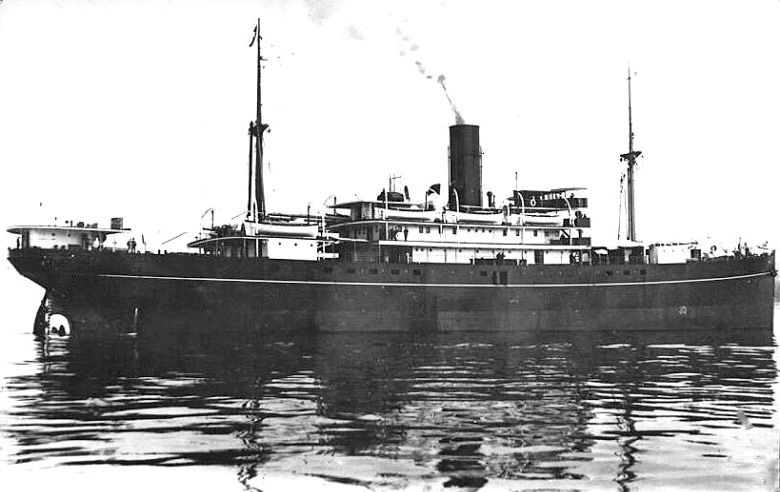
Leonard Edgar Littlejohns
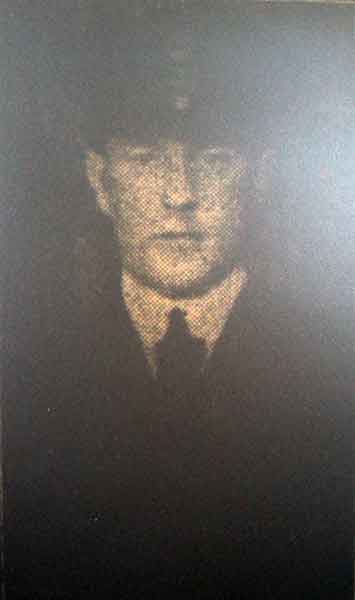
Len was born in 1920 to Mr. And Mrs. J. (Nee Northam) Littlejohns at Plympton. On leaving school Len went to work for Ambrosia creamery, Lifton before joining up with the Royal Navy as a Supply Assistant. He was aboard ‘HMS Prince of Wales’ when she was attacked and sunk by Japanese aeroplanes on December 10th, 1941 near Singapore. Len was one of the lucky survivors that was rescued and landed at Singapore. However, he was placed aboard the same Depot ship as Gerald Hillman, ‘HMS Anking’ which was evacuating to Australia when it was attacked and sunk by Japanese Cruisers just off Java on March 4th, 1942. Len wasn’t a second time lucky and he drowned. His body was never recovered but his name is commemorated on the Plymouth Naval Memorial. At the time of his death, his parents were living at No. 5, Lower Cleaverfield, Launceston. He is also commemorated on the Lifton War Memorial.
Charles James Vernon Shopland
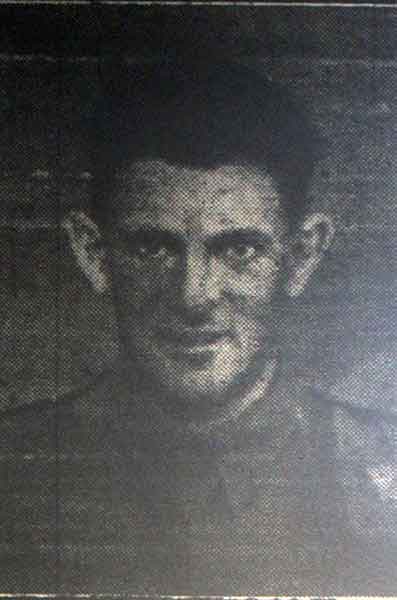
Charles or Vic as he was known, was born on May 6th 1912 at Road Ford, Broadwood to Samuel and Sarah Shopland. In 1940 he married Winnifred Rich at Okehampton. He enlisted with the Royal Army Service Corps as a Driver at Launceston (Regimental No. 220176). While on active service in the Middle East on May 11th 1942, he was drowned (with others) when his boat capsized whilst crossing the Nile. He was buried with military honours in the British Cemetery at Wadi Halfa, Sudan on May 14th 1942.
Richard Henry Maunder
Richard was born in 1914 to Richard and Jessie (nee Hocking) Maunder of Mount Madford, Launceston. Richard senior was a Rope manufacturer with his father Joseph in what is now Maunder and Sons at Scarne. He enlisted with the RAF serving as a Pilot Officer (Service No. 48170) He was killed in action serving in Egypt on May 21st, 1942. He is buried at the Heliopolis War Cemetery, Cairo,Al Qahirah, Egypt, Plot: 1. E. 3. He is commemorated on the Launceston War Memorial.
Edward John James Warren

Jack as he was known was born in Camelford in 1918 to Mr and Mrs H. Warren. His mothers maiden name was Rush. The family came to live at Athill farm, Egloskerry by the 1940’s. He enlisted with the Royal Corps Signals in 1937 as a Signalman (Regimental No. 2325677). He was killed in action on June 20th, 1942 at Tobruk, Libya and was buried at Acroma, Knightsbidge, Libya. He is also commemorated on the St Stephens Roll of Honour.
Anthony McDiarmid
Anthony, or Tony as he was known, was born 1919 to Arthur Hallam and Esther McDiarmid at West Farm, Altarnun. He had emigrated in 1939 to Australia from Southampton aboard the ‘Moreton Bay’ arriving in Sydney. He was listed as being a groom. He enlisted with the AIP serving with the Infantry (Service No. NX31697). On June 22nd, 1942, some weeks after the fall of Rabaul to the Japanese, a large number of Australian prisoners including Tony were embarked from Rabaul’s port on the SS Montevideo Maru. Unmarked as a POW ship, she was proceeding without escort to the Chinese island of Hainan, when she was sighted by the American submarine USS Sturgeon near the northern Philippine coast on June 30th. Not realising that the ship was carrying POW’s Sturgeon fire four torpedoes which sank the ship in less than 11 minutes. Tony drowned and his body was never recovered. His name is commemorated on the Altarnun War Memorial.
William E. Pring
There is very little information on William other than he was born in 1918 and that his mother’s maiden name was Edwards. It is probable that this is the William that served with the R.A.F. (Service No. 646044) as a sergeant with 38 Squadron in Egypt. He was killed on July 6th, 1942. His body was never recovered but William’s name is commemorated on the Alamein Memorial. He is also commemorated on the Lifton War Memorial.
Harry Doidge Searle
Harry was born in 1921 at Launceston to James and Maud (nee Doidge) Searle. Harry was a sergeant in the RAF Voluntary Reserve (service no. 1315569). He was killed in an aircraft accident on August 21st, 1942, and was interred at Stoke Climsland Church. He is commemorated on the Stoke Climsland War Memorial.
Ernest Roy Harris
Ernest was born on June 17th, 1914 at 12 Northumberland Place, Teignmouth the only son of Albert Edward and Emma (nee Undery) Harris. His father was a grocer’s assistant, but who had served with the Army Veterinary Corps (Regimental No. SE26857) serving with the 18th Battalion in Salonika from 1917 until his de-mob in 1920. In the 1939 register he is shown as being a radio engineer. He enlisted as a Sergeant Wireless operator/Gunner with the R.A.F. Volunteer Reserve (Service No: 1310418) serving with 521 Sqdn. He was killed on October 4th, 1942, whilst flying in a Lockheed Hudson IIIA, FH379 of No 521 Sqn, his aircraft was on a RHOMBUS sortie (Hudson FH 379) from Bircham Newton, Norfolk, and had been delayed by thick fog, but the aircraft captain eventually decided to attempt a take-off at 0715 hours. In fact thick fog still blanketed the airfield, and the aircraft appears to have started swinging to port during the take-off run. Sufficient altitude was gained to clear a hangar – but not a radio-mast. The collision sliced off the starboard wing and, as the aircraft crashed at 0718 hours, the tanks exploded engulfing the wreckage in flames.
He was interred at the Kensal Green Cemetery, London, Plot B. Grave 12. He was the husband to Phyllis May Harris, of Dawlish. They had one daughter. At the time of his death, his parents were living in Launceston. His name is commemorated upon the Dawlish and Launceston War Memorials.
William Arthur Evans
Born on January 4th, 1910 in London, his mother being a Londoner but his father’s ancestral line was based in Devon and Cornwall. When William was still a babe in arms his father took the family to live in Cardiff, where descendants can be found today.
Brought up in Cardiff, William decided his future lay elsewhere and looked for it in Cornwall. He was given accommodation by a William Tucker in the St Pinnock area and in 1935 married the daughter of the house, Rosina Tucker. In 1939 the couple were living in North Hill in the house next to The Rodd Arms. William was working as a pig and poultry man, possibly on the Trebartha Estate. Whilst living in this area William and Rosina had two children: Phyllis was born in North Hill in 1940 and Rosemary in 1942. Around this time the family moved to work at Siblyback Farm in St Cleer parish.
In the early days of the war, despite being a farmer and not being required to enlist, William opted to volunteer for the army. And so he enlisted with the Royal Engineers as a driver (Regimental No. 1946988). This upset his wife whose worst fears were realized when he was killed on active service on October 27th, 1942 whilst serving in Iraq. Phyllis was too young to remember her father and Rosemary never met him as she was born whilst he was serving in the Middle East. The circumstances of William’s death were described in a letter, dated 7 November 1942, to Rosina from his commanding officer, Major H K Roseveare (whose family have Quethiock origins) of the Royal Engineers:
Dear Mrs Evans
You will, of course, by now have been notified by the War Office of your husband’s death as a result of a motor accident on October 27th. I cannot tell your how deeply we, the officers and men, feel for you and your two little children in this tragic loss.
He was driving by himself in a Studebaker lorry in convoy and seems to have misjudged a bend on the road built half way up a mountainside. He went over into the river below. Death was due to multiple fractures of the skull – he cannot have known a second’s pain and the doctor who certified the cause of his death assures me that he cannot have known what happened. I went up to the spot immediately – it happened about 3 in the afternoon, and when we recovered his body we brought him back to this HQ and buried him the next morning. One of his mates, Sapper Arrowsmith made him his last resting place and is carving a beautifully done cross.
All this, I know, must reopen the wound, but I felt you would like to know what little I can tell you. He died for his country and to help our allies as surely as if it had been in battle – and we are all proud of him. He was buried, honoured by all his mates, at 10:30 in the morning and our thoughts were with you then – as they are now. I thought of Trebartha as I knew it last and of North End (sic – should be Hill) church and imagined him buried there in spirit.
If there is the slightest that I can do, you have only to ask. I am sending home to you anything of sentimental value and everything else will be sold here by auction and the results sent on to you.
The heartfelt sympathy of us all comes with this,
Yours sincerely
H K Roseveare, Major
William’s remains were initially interred in Andimeskh Cemetery which was in Persia, modern day Iran. Along with other casualties, his body was later exhumed and transferred to the Basra Commonwealth War Graves Cemetery in Iraq in September 1944. William is remembered on the North Hill War Memorial and on the War Memorial in St Cleer.
Maurice Sewell Peters
Maurice was born in 1917 to Charles and Ruth Peters at Launceston, they later moved to The Beeches, Boyton. Maurice worked as a correspondent with the Cornish and Devon Post before enlisting with the DCLI (Regimental No. 5438316)in 1938 serving as a Sergeant. As often was the case during either war, men were transferred to other regiments and this was the case for Maurice as he was seconded to the Force Maritime Regiment of the Royal Artillery. There was a need for qualified men to man the guns on merchant ships and it was in this role that Maurice was employed in doing. On November 2nd, 1942 Maurice was a gunner on the merchant vessel DEMS (Defensively Equipped Merchant Ship) Empire Gilbert. She was en route from the River Tyne to Archangel via Loch Ewe and Reykjavik, carrying war materials, including tanks and aircraft. Having left Reykjavik and on the final leg of the journey the ship was sunk 275 miles north of Iceland (70° 15’N, 13° 50’W) by torpedoes from the U-boat U-586 commanded by Dietrich von der Esch. At 01.18 hours on November 2nd, 1942 the unescorted Empire Gilbert (Master William Williams) was hit on the port side by two torpedoes from U-586 and sank within 2 minutes southwest of Jan Mayen Island. The U-boat had chased the ship for about two hours and missed with a first spread of two torpedoes at 00.17 hours. The Germans arrived at the sinking position after 30 minutes and rescued two men (deck boy Ralph Urwin and gunner Arthur Hopkins) sitting on a beam in the ice cold water, who were already unable to move and had to be lifted aboard. Von der Esch then tried to question six survivors on a raft but received no answer, so he took another man as prisoner aboard, the gunner Douglas Meadows. They took care of the survivors and landed them at Skjomenfjord, Norway on November 5th. The master, 46 crew members and 17 gunners (the ship was armed with one 4.7in, one 40mm, four 20mm and eight Twin Marlin machine guns) were lost.
Maurice’s body was never recovered but his name is commemorated on the Plymouth Naval Memorial and the memorial in Boyton Church.
Albert Henry Hitt
Albert was born in 1915 at Plymouth to George and Mary Hitt. His father was a ship builders labourer. Albert joined the Royal Navy as a painter (service no. D/MX 74507). He was serving aboard HMS which after landing troops at “Duff White Beach”, near Cape Aoka on November 12th, 1942. She then entered the bay of Bougie, Algeria and anchored with the others at 10 o’clock. The Germans made numerous air attacks during the night and at 0540 hrs she was hit by two bombs from Ju 88s and caught fire. The crew abandoned ship and she sank. Albert, however, was killed during the raid. He was interred in the La Reunion War Cemetery, Algeria. He is commemorated on the Stoke Climsland War Memorial.
1943
Percy Richards
Percy was born in 1911 at South Headdon, Hollacombe, Holsworthy to Mr and Mrs. T. V. Richards (mothers maiden name was Werren). On leaving school he initially worked on his fathers farm as a farm assistant but on November 28th, 1927 he enlisted at Holsworthy with the Royal Tank Regiment RAC (Regimental No. 7879621). On his application he had stated that he was older than he actually was putting his birth year as 1909. He was serving in Libya when killed in action when an enemy plane attacked his position on January 15th, 1943. He left a widow and daughter Gloria who were residing at Fore street, Lifton. His mother was residing at Gunnislake at the time of his death. He is also commemorated on the Lifton War Memorial.
Eric John Sullock
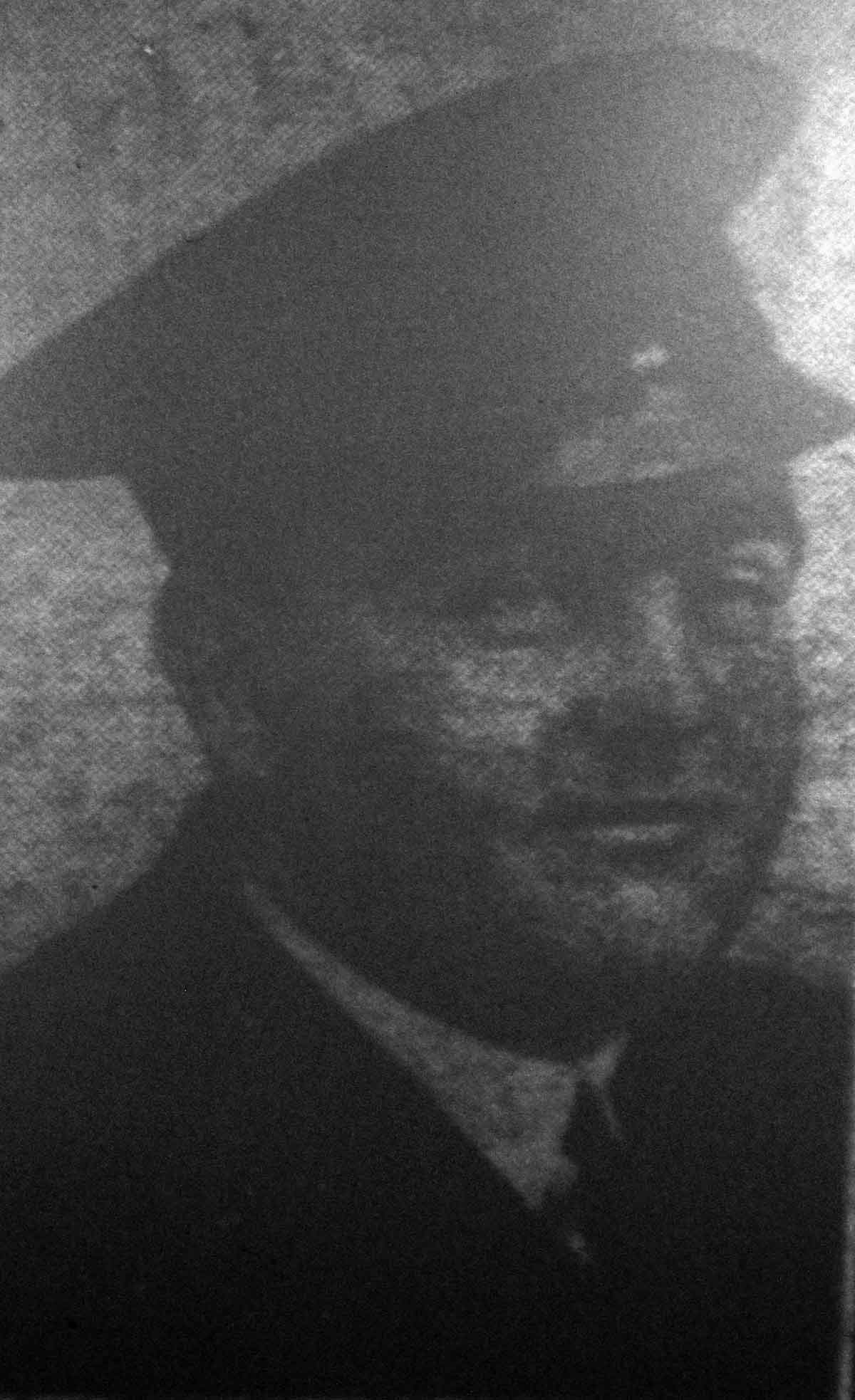
Eric was born in 1919 to John Thomas and Doris Maud (nee Doney) Sullock at Launceston. His Father worked as an Agricultural Labourer. Prior to the war, Eric worked for Mr. Stanley Robbins, Butcher, of St. Stephens Hill. Eric was highly thought of by customers and his employer who held him with high esteem. He was also a highly regarded member of the Launceston Brotherhood.
He joined the Royal Navy on of June 13th, 1940 and became a Leading Steward (Service No. LT/LX 29290) serving with the Royal Navy patrol service aboard ‘HM Trawler Bredon’. He died on February 8th, 1943. His body was never recovered but his name Is commemorated on the Lowestoft Naval Memorial panel 13 column 2. He is also commemorated on the Launceston War Memorial and St Stephens Roll of Honour.
His Majesty’s Trawler Bredon (Pennant Number T223) was a Hill class naval trawler that served as an anti-submarine escort trawler during the Second World War. She was sunk by U-521 on February 8th, 1943 while off the Canary Islands. Only 2 souls from her complement of 43 survived.
Reginald Edward Christopher Kirrage
Reginald was born in 1914 at Lambeth, London to John Charles and Emma Mary (nee Wayman) Kirrage. Reginald married Celia Russell at Elham, Kent in 1939 and they set up home in Lewannick having one son, Gordon. Reginald enlisted with the Duke of Cornwall’s Light Infantry as a Sergeant (Regimental No. 5436439). Serving with the 2nd Battalion, 10th Infantry Brigade, of the 4th Infantry Division, he was killed in action during the final phase (Operation Vulcan) of fighting in Tunisia on April 18th, 1943. He was interred in the Beja War Cemetery, Tunisia, grave ref:1. L. 2. He is commemorated on the Lewannick War Memorial.
The 4th division departed for North Africa in early 1943, arriving in Tunisia in March, coming under Lieutenant-General John Crocker’s IX Corps, part of the British First Army. During the Tunisian Campaign it was involved in Operation Vulcan, the final ground attack against Axis forces in North Africa which ended the North African Campaign, with the surrender of nearly 250,000 German and Italian soldiers. During the assault the division suffered heavy losses, with four battalions sustaining over 300 casualties.
Horace Frank Hicks
Horace or Frank as he was known, was born in October 1906 to Robert and Minnie Hicks at Tregaller, South Petherwin. He had an elder brother Robert and elder sister Louisa. He was a keen Church bell ringer and a Parish Councillor whilst before enlisting had been a member of South Petherwin’s Homeguard. Frank married Gwen Aunger in 1930 and together they had one child and at the 1939 register were living at The Retreat Moor View. At the outbreak of the War he had been working as a gardener.
Frank joined the Pioneer Corp as a Private (No 13084952) at the outbreak of World War Two and served in 81 Company. Frank was Killed in Action on the Island of Sicily July 23rd, 1943. Frank is buried at the Syracuse War Cemetery Italy. He is commemorated on the South Petherwin War Memorial.
Philip Smythe Raddall
Philip was born in 1921 to Thomas Frederick and Mary S (nee Smythe) Raddall at Launceston. His Father was a Commercial Traveller and the family resided at Southgate Arch, Launceston. Philip enlisted with the RAF as a Sergeant (Air Gunner) (Service No. 646713) serving with 218 (Gold Coast) squadron. He was killed in action on the 22nd September 22nd, 1943 and is buried at the Hanover War Cemetery, Hanover, Lower Saxony, Germany, Plot: Joint grave 12. B. 15-16. He is commemorated on the Launceston War Memorial.
(Niede A series of four major operations against Hanover Over a four week period began on the 22/23rd, at the hands of over seven hundred aircraft. It would prove to be a difficult city to hit, and stronger than forecast winds in the target area pushed the marking and bombing onto the south-eastern outskirts, where little damage was inflicted. Two 218 Squadron Stirlings were among the twenty six missing aircraft, and a third crashed in England after struggling home with severe flak damage. The flight engineer and both gunners had abandoned EJ105 over Germany, but one of the gunners failed to survive the descent, while his colleagues were taken prisoner. F/S Duffy managed to regain the Suffolk coast despite an engine fire, but the Stirling crashed soon afterwards, killing those left on board. EF139 was hit by bombs from above, an ever-present risk for the lower flying Stirlings, and crashed in the target area, killing Sgt Spencer and four of his crew. Finally, BK700 also crashed in Germany, and there were no survivors from the crew of P/O Colquhoun. rsachsen).
1944
Ronald Gordon Creber
Ronald was born at Strand Cottage, South Petherwin and was one of seven Brothers and one Sister.
Ronald was a Sergeant in RAF Volunteer Reserve and served with Bomber Command (Service No 1354856) in 103 Squadron and was a gunner on a Avro Lancaster. The Lancaster (JB747 ) was shot down and crashed at Zehrensdorf in January 3rd, 1944, killing all the crew.
Ronald is buried at Britischer Soldatenfriedhof, Berlin. He left a widow in Lily (nee Spence) Creber whom Ronald had married in 1943 at Hendon, Middlesex. He is commemorated on the South Petherwin War Memorial.
Harold Charles Walters
Harold was born in 1908 to Henry and Lily Walters at Launceston. His Father was a Postman. He was married to Evelyn May Wakem. He enlisted with the Royal Artillery (Regimental No. 1714625) as a Gunner. Harold died on January 21st, 1944 after a short illness. He is buried at Launceston Cemetery, Plot H. H. Grave 161. He is commemorated on the Launceston War Memorial.
Sydney Robert Wevill

Sydney was born in 1924 to Frederick and Edith Wevill at the Village, Lawhitton. Bob as he was known, after leaving school served his apprenticeship at Messrs. Prouts Garage, Launceston. Before the war he was a regular bell ringer at Lawhitton church. He was a member of the A.T.C. and also the Lawhitton Homeguard before he joined up with the Royal Navy in 1942 as a Leading Motor Mechanic (Service No. P/MX 98286). He was wounded whilst serving aboard the ‘HM Motor Torpedo Boat 439’ just off the Dutch coast in the autumn of 1943. (The boat along with others was on an anti E Boat patrol to seaward of the east coast convoy route.) He was taken to hospital in Uxbridge but died of his wounds on January 27th, 1944 at the age of 20. He was buried a week later at Lawhitton parish church.
Randolph Henry Bevan

Randolph was born in 1908 to Henry and Mary Beatrice Bevan at Fore street, Lifton. His father was an Estate Carpenter and Randolph by 1939 was a Radio Electrical & Photographic Dealer. His father died just two months before Randolph enlisted in with the the Royal Electrical and Mechanical Engineers (Regimental No.10553339) as a Craftsman in May 1941. He saw service in Ceylon and India and was a regular letter writer, his sister Mrs. W. Fredrick only received a letter from him on March 17th, just two days before he was killed whilst serving in Burma on March 19th, 1944. He was interred in the Imphal War Cemetery, India, grave ref: 7. A. 25. His name is commemorated on the Lifton War Memorial.
Russell George Evely
Russell was born in 1914 at Stoke Climsland to Lewis and Hetty (nee Percy) Evely. He married Kathleen Bickford in 1935 and they set home at Pempwell, Stoke Climsland. At this time Russell was working as a road worker. He enlisted with the Duke Of Cornwall’s Light Infantry serving as a corporal (regimental no. 5444091) with the 2nd battalion. He was killed whilst fighting around Cassiono, Italy on April 2nd, 1944. He was interred in the Cassino War Cemetery, Italy. He is commemorated on the Stoke Climsland War Memorial.
George Thomas Slade
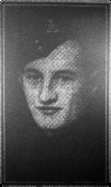
George was born in 1916 at Holsworthy to Francis Charles and Gladys Madeline (nee Horwell) Slade of the square, Holsworthy. His father had served with the Devon Regiment in world was one. He first learnt his trade with Messrs Whitlcok of Holsworthy and went on to work for Messrs Prockter and Kent of Launceston. He was married to Sylvia Bant in 1942 at Lawhitton and had been living with his wife at No 4, Higher Cleaverfield, Launceston. They had one daughter. He enlisted with the The Wiltshire Regiment (Duke of Edinburgh’s) (Regimental No. 5441934) as a Corporal. He was killed in action in Italy on May 9th, 1944. He is buried at the Beach Head War Cemetery, Anzio, Provincia di Roma, Lazio, Italy, Plot: XIV. G. 4. He is also commemorated on the Launceston War Memorial and St Stephens Roll of Honour.
In May 1944, the Wiltshire Regiment reached Italy and was placed under the command of 78th Division. The Royal Wiltshire Yeomanry was to support 36th Infantry Brigade, with one squadron in support of each of the brigade’s three infantry battalions. In May–June 1944 it took part in the advance on Rome, working its way up in close country between the central mountains and the sea to the west. At one point, 78th Division withdrew but outlying elements of the regiment did not get the message and continued forwards. The Corps HQ diary for 23 June records ‘RWY water truck reports Vaiano clear of enemy’.
(George’s Brother Sapper Charles Slade of the Royal Engineers was a POW of the Japanese).
Arthur John Jago
Arthur, or ‘Bobby’ as he was known, was born in 1924 to Albert and Elsie Irene (nee Callard) Jago at St. Claire, Launceston . His Father was a Postman and Arthur followed into this profession on leaving school. He was a regular attendant of the Launceston Brotherhood and had received two awards for making full attendance for two years. He joined the local Post Office Home Guard before enlisting with the Royal Navy in January 1944 as an Ordinary Seaman (Service No. JX398524). Just five weeks before his death he had come home on leave and many thought he had looked very fit and were very surprised to learn of his death at a Royal Navy Hospital in North Wales on May 22nd, 1944. He was buried at Abererch (St. Cawrdaf) churchyard, Wales with full military honours. He is commemorated on the Launceston War Memorial.
D-Day
Fred Gribble
Fred was born in 1912 at Launceston to Fred and Emily (nee Nichols). He enlisted with the RAF volunteer reserve serving as a flight lieutenant (service no. 134098). He served with 196 Squadron flying a Stirling IV LJ841 and after dropping off paratroopers on D-Day, June 6th, 1944, his plane was hit by anti-aircraft fire and crashed killing all onboard. Fred was interred at the Cagny Communal Cemetery in France. He left a widow, Eleanor Mohn Gribble, who lived at Long Island, USA. He is commemorated on the Stoke Climsland War Memorial.
Leonard Burden

Leonard was born in 1913 to Mr and Mrs Frederick Burden at Poundstock. He worked as a Carpenter and it was stated that he was a mild mannered man who loved his home and his job, but he didn’t shirk the responsibility for his country he enlisted with the Royal Artillery as a driver but just 6 weeks before D-Day he was transferred to the Gordon Highlanders as a Private (Regimental No. 14352957) serving with the 1st Battalion who were part of the famous 51st Highland division. He died of his wounds received at Normandy on June 23rd, 1944 aged 31. The Officer to whom he was batman, said “He was my batman, but to me, he was a friend, a friend I shall miss, and as one of my men he can never be replaced. In the battlefield, he did a wonderful job and his calm face in times of grave danger was marvellous to see”.
He was interred in the Canworthy Water Methodist Cemetery. His wife Mary, who at the time of his death was residing at Fonson, survived him by 65 years. They had one child. He is also commemorated on the Warbstow War Memorial.
William Alfred Harris
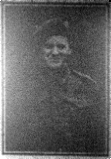
William or Bill as he was known was born on the 27th of June 1914. His Mothers maiden name was Ball. He was working on the railway as a Lengthsman when he enlisted with the Duke of Cornwall’s Light Infantry (Regimental No 5442008) as a Private. He was killed in action whilst attending the wounded at Normandy on June 27th, 1944 (his birthday). His Mother at the time of his death was living at No. 8 Angel Hill and he was residing next door at No 9 with his wife Ethel. He is buried at the Bayeux War Cemetery, Bayeux, Departement du Calvados, Basse-Normandie, France, Plot: XXIV. E. 16. He is commemorated on the Launceston War Memorial.
Carlos Leonard Blackwell
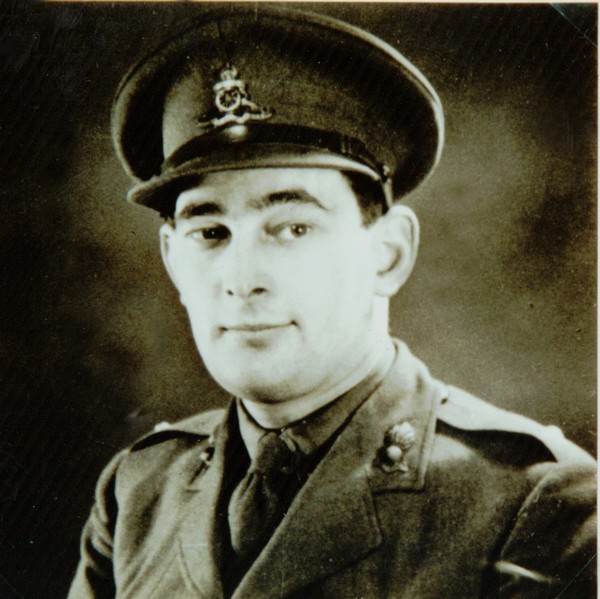
Carlos was born in 1916 in Seoul, Korea to Ernest and Zelma Blackwell. He continued his education by studying law passing his intermediate exam in April 1937. In 1938, Carlos married Kathleen Bow in Surrey. He enlisted with the Duke of Cornwall’s Light Infantry reaching the rank of Captain (regimental no. 109793). Serving with the 5th battalion, he took part in the D-Day landings on Normandy and just over a month later Carlos was killed in action on July 11th, 1944, when he won the military cross for bravery. He was interred at the Banneville-la-Campagne War Cemetery, Normandy, France. He is commemorated on the Stoke Climsland War Memorial.
R. J. COUCH
Possibly Reginald Joseph born in 1920 to Joseph S. and Emily Couch later of Totnes. He was serving as a Petty Officer Telegraphist with the Royal Navy (service no. D/JX 146499) aboard H.M.S. Isis which struck a mine and sank off the Normandy landing beaches on July 20th, 1944. She was later discovered during an expedition to locate the wreck of RMS Carpathia. Reginald’s body was never recovered but his name is commemorated on the Plymouth Naval Memorial. He is commemorated on the Stoke Climsland War Memorial.
Gerald Ivor Callow
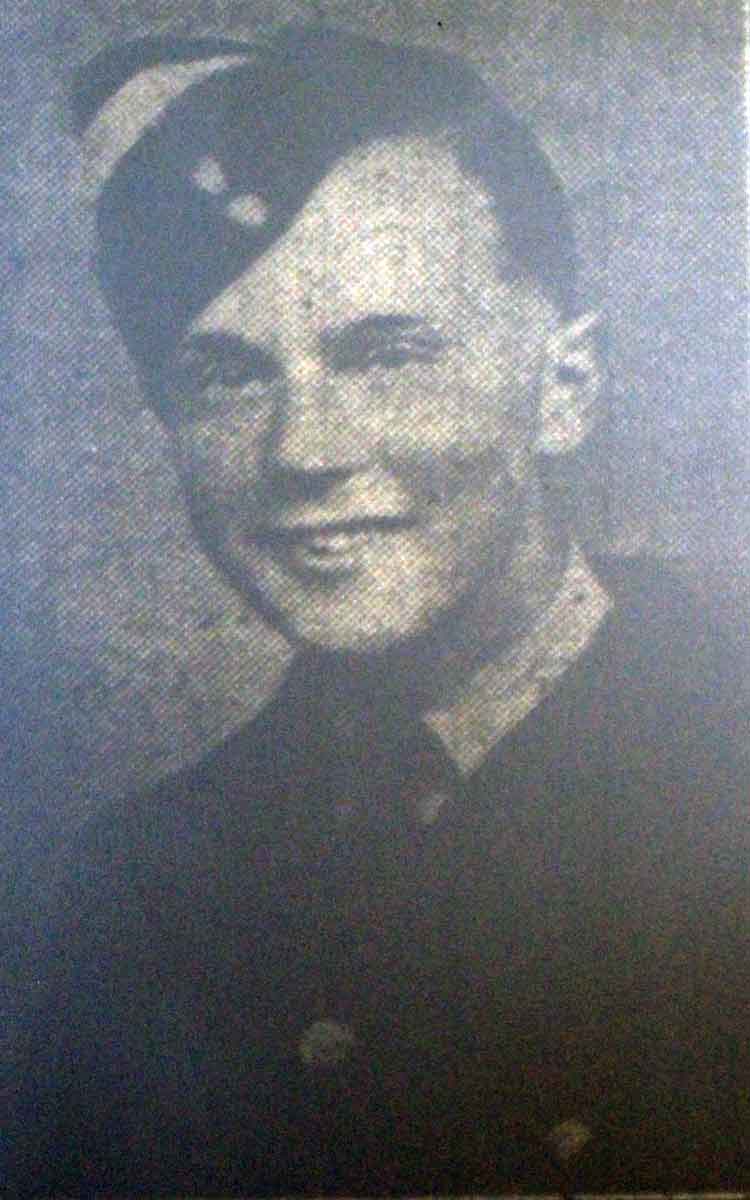
Gerald was born in 1925 to John and Flossie Callow at Langore, St. Stephens. On leaving school he was employed by Messrs. Miller and Son, florists, etc. and later he went to the Admiralty to work. He was a keen sportsman and was well known in singing circles having been a member of the Truscott Methodist Church Choir for some time and was also a valued member of the Sunday School. He had been a prominent member of 1559 Squadron, A.T.C., and the training he received stood him in good stead on joining the R.A.F. as a Air-Gunner (Service No.3032826). He had just been promoted to Sergeant and had been due to come home on promotion leave just a couple of weeks before he was killed in a flying accident between two Wellington bombers (HF517 & MF589) whilst on active service on the night of August 26th, 1944. He was buried at Truscott Chapel, St. Stephens. Gerald is remembered on a plaque at a garden centre in Prestwood, Buckinghamshire, near where the plane came down. He is also commemorated on the St Stephens Roll of Honour.
On the night of Friday 25 August 1944 the two aircraft took off and were airborne one minute apart to practice a night exercise termed a ‘bullseye’. This involved a cross country flight incorporating several different turning points that could be situated anywhere in the UK and was meant to give trainee crews experience that would bind them together into a cohesive unit. Along the route they would probably make a dummy bombing attack on a specified town.
The first Wellington HF517 was piloted by Flying Officer Erik Michielsen (Dutch) and the British crew consisted of Pilot Officer Ronald Junor (navigator), Pilot Officer John Sutherin (Air Bomber), Sergeant James Clarke (Wireless Operator), Sergeants John Butterfiled and Gerald Callow (Air Gunners). The second Wellington MF589 was piloted by Flying Officer Elwood Smith (Canadian) and crewed by four Canadians Flying Officer Vernon Bolton (Navigator), Flying Officer Norman Cousins (Air Bomber), Sergeant James McMurtrie (Air Gunner), Sergeant Raymond Sander (Air Gunner) and one Englishman Sergeant John Poston (Wireless Operator).
At 1.25am on the 26 August these two aircraft collided over Prestwood and fell as burning disintegrating wrecks into the village. Of the twelve crew members, eleven were killed, the survivor Pilot Officer Junor was found wandering in adazed condition in Lodge Wood. In the official report following the collision the conclusion was ‘ failure by both crews to keep an adequate look out’. Report by Ruth Peplow former WAAF.
Charles Wilfred Parish (the memorial has his initials displayed as G. W.)
Charles was born on November 7th, 1916 to Eli and Florence Parish at Launceston. He married Laura Mary Davey in 1942 and they set up home at 7 Duke Street, St. Stephens, Launceston. In the 1939 register he is showing as a labourer in recreation. He enlisted with the Durham Light Infantry (Regimental No. 5443235) as a Private. Serving with the 6th Battalion of the 151st brigade in Belgium he was killed in action on September 10th, 1944 whilst fighting to take the village of Gheel and is buried at the Gheel War cemetery.
In his will he left his effects to the sum of £151 14s. 6d. to his wife. He is also commemorated on the Launceston War Memorial and St Stephens Roll of Honour.
The 151st brigade advanced in line with the other advances made by the allies in July and by early August was attacking hills south of St.Pierre la Vielle on what was to become the northern edge of the Falaise pocket. After the break out from Normandy the division crossed the Seine on August 29th, and reached the Belgian border on September 6th. After a brief rest in Brussels the brigade was tasked to cross the Albert canal in the wake of the 69th brigade, and take the village of Gheel. After holding a series of counter-attacks the 15th Division entered the village on September 12th, without a shot being fired, as the Germans had retreated.
From the 6th Battalion War Diary:
Sunday September 10th…The pontoon bridge came under heavy fire throughout the morning ,forward companies of 6 DLI also reported heavy fire all the signs that the Germans were preparing a counter-attack. The Company on the left flank(B Company I believe) first reported enemy infantry supported by tanks advancing on their position. During a particularly fierce engagement Lieut Allen of the forward platoon was killed, during this time orders were given that the attack on Gheel was to commence with artillery and tank support, D Company would attack from the left with C Company on their right whilst A & B Company moved up to support the forward two. At the same time 9DLI would press home their attack to the right of 6DLI the attack would start at 1330hrs.
As the battalion approached the start line they were engaged by heavy fire as the Germans began an attack of their own sweeping through and overrunning A Company positions the advance was only stemmed by two sections of the Battalions carriers and great efforts by C Company who fought their way up through A Companies positions and reached the original start line. Casualties up to this point were heavy. D Company under Major Wood despite being aware of the situation ordered his men forward following the Creeping Barrage and supported by armour. A & C Companies were regrouped into one composite company(Due to high Casualties) and they too advanced at 1410hrs the armoured support reported enemy in a trench or depression so low that the tanks were unable to bring down fire upon them it was left to D Company to move with artillery support to flush out the Germans which they managed to do with the Germans falling back in the Direction of Elsum.9DLI had come up in support of the composite company as D Company moved into Gheel itself, bitter hand to hand fighting ensued with each house fought for along the way .Objectives for D Company had been the Church and a position just south of the station both were taken but not without heavy losses, B Company were ordered to move through D Company and consolidate the area. Battalion mortars were set up in readiness for the expected counter attack which came at 2020hrs following heavy German shelling the Germans attacked in numbers swamping 6DLI positions. A patrol from D Company ran into a German patrol and after a short fire fight fifteen Durhams were captured Five Officers and Thirty other ranks had been killed already that day with a further sixty seven wounded four of whom would die, another forty two were missing .At 0100hrs on the 11th the Germans put in another counterattack which virtually cut off all of the forward companies and which now threatened Brigade HQ which was hurridly withdrawn back across the river.8DLI were now pushing up to the left of the 6DLI together with 9DLI they were finding life very difficult. At 1050hrs D Company 6DLI reported German tanks which were engaged by artillery fire.B & D Companies were dangerously low on both food and ammunition Captain Harrison commandeered a number of jeeps and loaded them with food and ammunition and set off at 1350hrs to try and reach the cut off companies a task he succeeded in. Encouraged by this Major Field of S Company 6 DLI sent fifty men and six carriers to reinforce these companies .One carrier was destroyed almost immediately by German Artillery fire another was disabled but the men were unhurt .They reached the 6DLI companies and began the task of evacuating the wounded which were sent back down the line with a number of German POW`s.A spotter in the church tower reported more German Infantry creeping through the hedgerows and accurate artillery fire was brought down upon them once again at one point the battalion lost one of its two remaining anti tank guns but a quick counter attack recaptured it,at this time the Durhams were under heavy machine gun fire from strong German position behind a knocked out German SP gun nearby was a disabled carrier belonging to one of the 50Div sapper companies still packed with explosives.The tank support opened up targeting the carrier which exploded killing all the germans sheltering at this position. Word was received at 1430hrs that 6DLI were to be relieved how that was to be done would be a problem as most were still cut off, However D Company attempted to fight its way out and after a bitter struggle succeeded C and A Companies did not get out and it was assumed that they had either been taken prisoner or worse killed in action. Two days later ,however Lieut Seggie brought out the remaining men from both Companies after they had fought from house to house and street to street. With 151 Brigade withdrawn the 15th Scottish Div made an attack on Gheel and found the town was empty the enemy had withdrawn.
Stanley Gordon McLaren
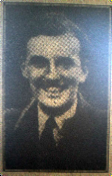
Stanley or Gordon as he was known, was born in 1923 to Stanley George and Lucy McLaren (nee Bickle) at Launceston. He married Marjorie Bickle (who was a Wren) of Chelmsford Street, Silksworth, Durham in 1943 at Tunstall, Durham. Before the war Stanley worked for Pearl Assurance Company.
Gordon joined the RAF as a Flight Sergeant (Service No. 1607034) serving with 140 squadron (Royal Air Force was a Second World War photo-reconnaissance squadron that operated between 1941 and 1945). He is listed as failing to return after an operation on September 14th, 1944. His body was never recovered but his name is commemorated on the Runnymeade memorial in Surrey, panel 220. He is also commemorated on the Launceston War Memorial.
John Henry Marks
John was born in 1911 at Launceston to Edward and Hilda Marks. They lived at Trewarlett Cross. He joined the regular army in the early 1930’s serving in India with the Devonshire Regiment as a Lance Corporal (Regimental No. 5616020), before returning to civilian life and marrying Gwendoline F .Dawe at Launceston in 1938. They had two daughters Joy and Shirley and lived at Prockters Place, Launceston. His brother, Bert, was a Corporal in the RAF. As a Reservist he was recalled to the colours before the outbreak of war and was drafted to Malta where he served with the 2nd Battalion of the Devonshire Regiment for three and a half years and came home without a scratch from the terrible blitz that Malta had experienced in the war. He was then sent to Sicily serving with Montgomery’s Eighth Army. On Christmas Eve of 1943 he went home on leave before joining the preparations for D-Day. Just the following day after his wife had received notification of his death, a letter arrived from John telling her that he was quite well and looking forward to coming home on leave. The letter was written on September 23rd, 1944, just two days before he was killed on the 25th. He was interred in the Uden War Cemetery, Noord-Brabant, Netherlands,2. B. 11. He is also commemorated on the Launceston War Memorial.
On D-Day the 2nd Devons landed immediately behind the 1st Hampshires and 1st Dorsets and then passed through to capture Ryes and an enemy coastal battery at Longues. In the Normandy campaign they fought at La Belle Epine(near Trungy), at Hottot, at Le Lion Vert and at Les Forges on the road to Conde sur Noireau. After the rapid advance across the Seine and through Belgium, they played a part in Operation Market Graden, fighting to consolidate the Eindhoven corridor through which XXX Corps would pass on their way to the bridges at Nijmegen and Arnhem.
Donald R. Stuart
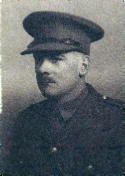
Donald was born in 1918 to Major and Mrs. W. J. (nee Ward) Stuart at Plymouth. The family later moved to reside at Floden Tor, Boyton. H e enlisted with the DCLI in 1938 but was subsequently transferred to the Somerset Light Infantry serving as a Lieutenant (Regimental No.217367) of the Airborne Division. He was killed in action at Arnhem spearheading the assault under Colonel Snow for control of Arnhem bridge on October 1st, 1944. He is interred at he Airborne Regiment Cemetery at Oosterbeek. His name is commemorated on the Boyton Roll of Honour.
Thomas Holman Hender
Thomas was born in 1907 to Herbert Holman and Alice Mary (nee Finch) Hender at Launceston. The family were a long line of Tanners working at premises in Newport, Launceston of which Thomas was a director. Thomas married Vera Thomas at Camelford in 1934 setting up home at Wisonia, Launceston. He was a keen member of the North Cornwall Motor Club and regularly took part in the London to Lands End motor trials held each Easter. Before he joined up he had been a member of the 3rd (Castle) Battalion of the Home Guard. He enlisted with the Royal Army Ordnance Corps (Regimental No. 10591508) as a Private. He was killed in action on October 28th, 1944. He is buried at the Eindhoven (Woensel) General Cemetery, Netherlands, grave 197. He left a sum of £14432 16s 7d. to his Widow and Wyndham Finch Hender his elder Brother. At the time of his death his residence was Pennygillam, Launceston. He is commemorated on the Launceston War Memorial.
Noel J Goodman
Noel was born in 1925 to Mr and Mrs S. Goodman at Trelawney Terrace, Launceston. His Mothers maiden name was Skitmore. Before the war, he had been working for Treleaven’s outfitters, Southgate Street. He married Ethel Beckett of Knottingley, Yorkshire in 1942 and they had two Daughters, Pat and Sandra and living at 42 Tower Street, Launceston. He enlisted with the Royal Marines (Service No. PLY/X 108680) and died on November 1st, 1944 aboard a Gunboat LCS(L).252, which was taking part in operation Infatuate the ‘Walcheren Landings’ and was lost in battle off the coast of Belgium.
Operation Infatuate was the codename given to an Anglo-Canadian operation during the Second World War to open the port of Antwerp to shipping and relieve logistical constraints. The operation was part of the wider Battle of the Scheldt and involved two assault landings from the sea by the 4th Special Service Brigade and the 52nd (Lowland) Division. At the same time, the 2nd Canadian Infantry Division would force a crossing of the Walcheren causeway.
His body was never recovered. He is commemorated on the Launceston War Memorial.
Cephas Nicholas Harry
Cephas was born in 1925 to John Robert and Emmeline Florence (nee Nicholas) Harry at Launceston. His father was a Tailor and outfitter of 6 Westgate Street, Launceston. He was a Telegraphist with the Royal Navy (Service No. P/JX 501362). During the Second World War Frederick served as Able Seaman D/JX 422876 with His Majesty’s Landing Craft Flak 37, a converted landing craft used as an anti-aircraft gun platform. On November 1st, 1944 the vessel participated in amphibious invasion by Royal Marine and army personnel on the Dutch island of Walcheren (the same operation that Noel Goodman lost his life in), then held by the Germans (Operation Infatuate). During the attack, the vessel was lost and many men killed including Cephas. His body was never recovered but his name is commemorated on the Portsmouth Naval Memorial panel 84 column 3. He is also commemorated on the Launceston War Memorial.
He left to his Father a sum of £171 4s 6d.
Fred Sargent
Fred was born in 1902 to Lewis and Ellen (nee Wheeler) Sargent at Launceston. His father was a Cartman for a Mineral Water Manufacturer. He served his apprenticeship with Mr Rockey, Butcher of Launceston but left Launceston in 1924. He Married and with his Wife had one Son and one Daughter. He was already in the Army reserve and joined up at the outbreak of War in August 1939.
He enlisted at Portsmouth (where he was living) with the Royal Army Ordnance Corps as a Warrant Officer Class I (Regimental No. 7580190) serving in North Africa and Sicily and was also in the Dunkirk evacuation of 1940. He died in an accident in Italy on December 12th, 1944. He is buried at the Cesena War Cemetery, Cesena, Provincia di Forli, Emilia-Romagna, Italy, Plot: II. G. 7. He is commemorated on the Launceston War Memorial.
Howard Phillips
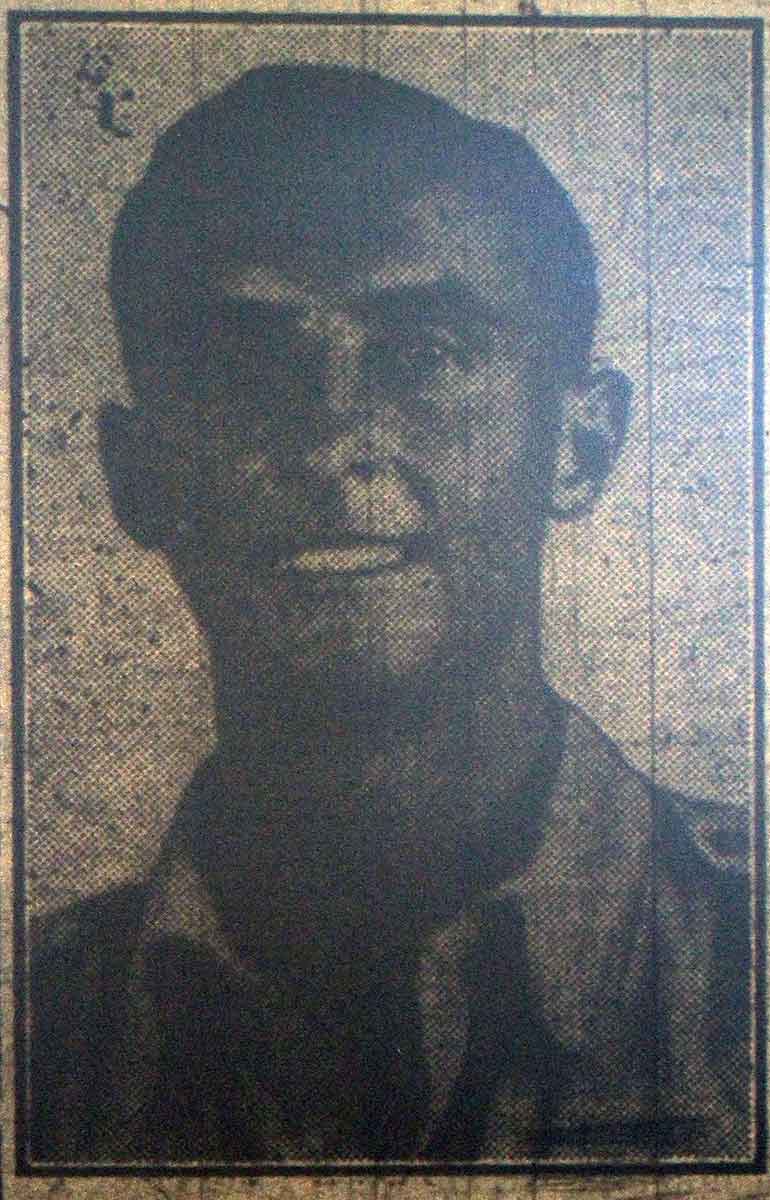
Howard was born in 1923 to William and Elizabeth Phillips at Altarnun. He enlisted with the Queens own Royal West Kent Regiment (Regimental No. 5349383) serving with the 1st Battalion as a Lance Corporal. He was later promoted to Sergeant. He died on the 14th of December 1944 of his wounds sustained whilst fighting in Italy and is buried at St. Nonnas Church, Altarnun. His name is commemorated on the Altarnun War Memorial.
1945
Francis John Duke
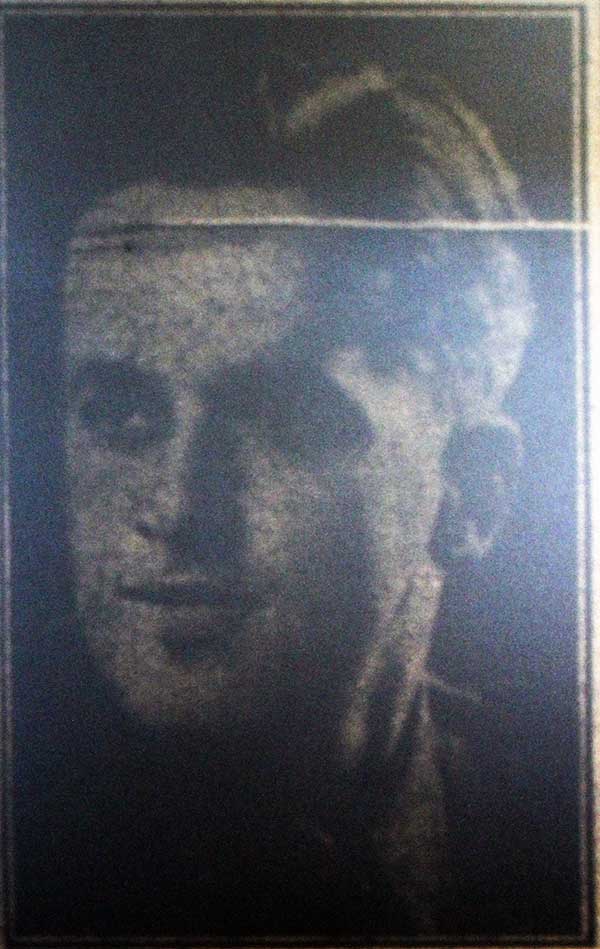
Francis was born in September 1916 to Charles and Annie Duke at Tower Street, Launceston. He went to work for Mr. Stanley Parsons as a Baker and Roundsman and was very well known because of this. He was also a member of Launceston’s Brotherhood. He married Winnifred Ellacott of Hatherleigh in 1938 at Launceston and they set up home at 2 Station Road, Launceston. He enlisted with the Argyll and Sutherland Highlanders (Princess Louise’s) (Regimental No. 5440993) in March 1940 seeing considerable service in Ireland before his posting on the continent. He was killed in action on January 24th, 1945. He is Buried at the Venray War Cemetery, Venray, Venray Municipality, Limburg, Netherlands, Plot: III. F. 3. He is commemorated on the Launceston War Memorial.
Ronald Phillip Dell Jury
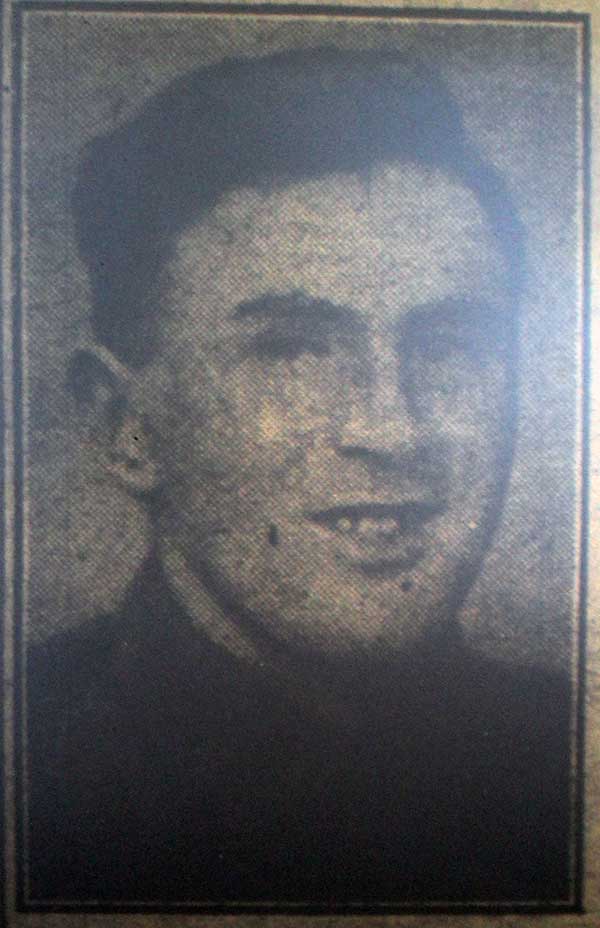
Ronald was born in 1920 at St. Thomas Road, Launceston to Thomas and Emily (nee Cruch) Jury. In 1942 he married Barbara Joyce Evely at Launceston and they lived at Shooting Park, Race Hill, Launceston. He worked a Gardener for Mr. Peter at Trenance, Launceston and was also a member of the Launceston Cottage Garden Society being very successful at the various shows around the district.
He enlisted as a Bombardier with the Royal Artillery (Regimental No. 997470) serving with the 4th Air landing Anti-tank Battery. He was killed in action on March 24th, 1945. He is buried at the Reichswald Forest War Cemetery, Kleve, Klever Landkreis, Nordrhein-Westfalen, Germany, Plot: 38. F. 4. He is commemorated on the Launceston War Memorial.
Coder Reginald Studley Hole
Coder as he was known, was born in Peverall, Plymouth. He attended Public Central School in Plymouth before moving with his family to 18, St. Thomas Road, Launceston in June 1941 due to the firm that his Father worked for moved from Plymouth to Launceston because of the bombing there. He first worked for Shuker and Reed as a clerk before joining the indoor staff of the head office of the Launceston G.P.O. as a temporary S. C. and T. He was a member of the A.T.C and Launceston Brotherhood as well as being a keen footballer.
He joined the Royal Navy in 1944 (Service No. D/JX 731408). The family received official notification that he was missing in April 1945 and later that month it was conformed that he had died on March 20th, 1945 when his ship ‘HMS Lapwing’ was attacked and sunk by a German U-Boat (U-968). His body was never recovered but his name is commemorated on the Plymouth Naval Memorial, Panel 94 column 2. He is commemorated on the Launceston War Memorial.
Official records show 158 sailors died on March 20th, 1945, on board the HMS Lapwing, which was just a day’s sail from the Russian port of Murmansk when it was torpedoed without warning by the German submarine U-968.
Lesley Maunder
Lesley Maunder was the third of Mr. and Mrs. Ernest Maunder’s six children. Lesley was born at Tremollett, and went to school in Coad’s Green and attended Sunday School at the Chapel in the village. Indeed, it was Leslie’s Sunday School teacher who encouraged him to join the Navy. At 14 years old, Lesley enlisted as a boy telegraphist, receiving his training at HMS Impregnable. He joined the crew of HMS Exeter in 1941. On March 1st, 1942 the Exeter was fatally damaged in the Battle of the Java Sea, and sunk.He survived but was captured by the Japanese and taken prisoner. He was placed in the dreadful prisoner of war camp on the remote Ambon Island. Lesley died on April 13th, 1945, just four months before the Japanese surrendered. He was interred at the Ambon War Cemetery (grave no. 29B11). He is commemorated on the North Hill War Memorial.
William John Moyse
William was born in 1918 to William and Maud Moyse at Launceston. His Father was a Police Constable. He married and set up home with his wife Mabel, at 2 Western Terrace, Launceston.
He enlisted initially with the Duke of Cornwalls Light Infantry but was transferred to the Royal Engineers (Regimental No. 5438227) serving with the 561 Army Field Company as a Sapper. He was killed in action on August 26th, 1945. He is buried at the Klagenfurt War Cemetery, Klagenfurt, Carinthia (Kärnten), Austria, plot 1 A 10. He is commemorated on the Launceston War Memorial.
Frank Albert Henry Gillard
Frank was born in 1924 to Frank Hawkins and Alice Maud Brown (nee Bennett) Gillard at Launceston. His Father is listed as being the Master of public assistance institution.
He enlisted with the Royal Navy as a Sick Berth Attendant (Service No. D/MX 111010). He was serving aboard ‘HMS Loch Gorm’ when he died on December 22nd, 1945.
At the time of his death the family were living at Pages Cross House, Launceston. He is buried at Launceston Cemetery, plot G. G. Grave 161.
1946
Bob Treleaven
Bob was born in 1922 to James Horswell (who had served in the first world was with the motorised machine gun corps) and Kathleen Elizabeth (nee Colwill) Treleaven at No 7, Dunheved Road, Launceston. The family ran the successful Outfitters Treleaven’s in Southgate Street, Launceston. His Father died in 1939 just after the outbreak of war.
He was a member of the RAF Volunteer Reserve (Service No. 141464) and served as a Aircraftman first class from 1941 in India and Persia. He died at Tehidy Sanatorium after contracting a serious illness in Persia on the 8th of March 1946 and is buried at Launceston Cemetery, Plot I.I. Grave 193.
Visits: 123
